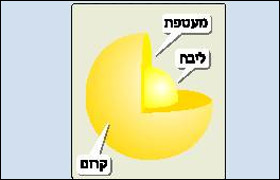Radar probes of the planet's atmosphere and interior may reveal when it formed

Part of the face of the planet Venus is covered with lead compounds - so claim researchers from Washington University in St. Louis, United States. The finding, based on calculations, reinforces the opinion that the surface of Venus was shaped by volcanic activity, which caused a large amount of heavy elements to break out from the interior of the planet, and rise to its outer parts. Around Venus there is a thick atmosphere, which does not allow direct observation of its surface.
Although several spacecraft have already landed on the surface of the planet, the information received from them was scarce, because their operation was extremely short: the temperature on Venus reaches several hundred degrees Celsius and its soil contains acids. Under these conditions, the delicate scientific instruments stop working within a few hours.
The possibility that parts of the face of Venus were covered with a metallic substance was first raised when "Magellan", a robot satellite orbiting the star, examined its surface using radar. "Magellan" discovered that the mountain peaks on Venus reflect the radar signals well, a characteristic characteristic of metallic surfaces. Similar findings have now been obtained from testing the types of materials likely to be found in the atmosphere of Venus.
The researchers claim that the most likely possibility is that the surface of Venus has a "coating" of sulfur and lead. The presence of the lead will make it possible to date the time of the formation of the planet. This, by checking the frequency ratio between the different isotopes, as is done to determine the age of the earth.
